Authorization
EMQX provides powerful permission control capabilities, and EMQX Dashboard provides out-of-the-box authorization management capabilities to quickly configure EMQX authorization mechanisms through visual pages without writing code or manually editing configuration files, enabling permission control for publishing and subscribe operations after MQTT client connection, enabling security configuration at all levels and in all scenarios.
Under the Access Control menu on the left, users can access the Authorization page, where they can quickly create and manage the various types of authorized configuration resources that have been created.
Create
In the upper right corner under the Authorization page, click the Create button to go to the Authorization page. Creating an authorization requires selecting a backend to configure and store permission data.
Backend
The backend contains the option to use File, Built-in databases, external databases, or HTTP Server.
Use ACL File to edit and save authorized content by scanning a set of rules defined in the file for each publishes or subscribe request to determine if the request has permission to perform the desired action.
Use the EMQX built-in database, which can also be used to configure and store authorization rules.
Use an external database to store authorization rules, supporting a selection of mainstream databases including: MySQL, PostgreSQL, MongoDB, Redis, etc.
Delegate authorized requests to an external HTTP server using a pre-defined HTTP service. The external HTTP service needs to include the ability to validate permissions.
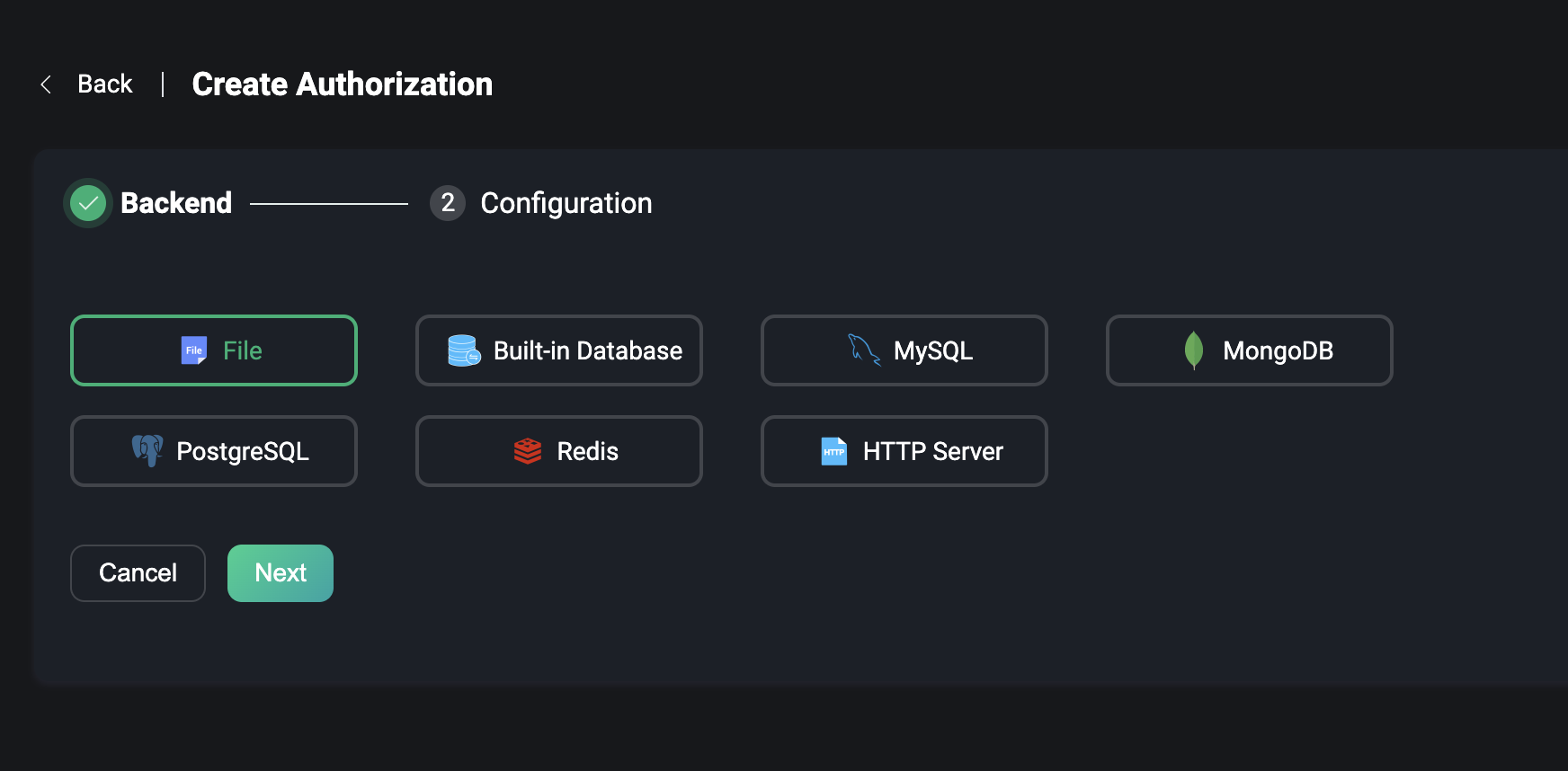
Configuration
After selecting the backend it is time to create the final step of authorization and configure the selected backend. Each backend has some configuration for connection or uses that need to be configured manually by the user, or the content of the rules can be edited and saved in an ACL file.
File
Using the ACL file, a text edit box is provided on the configuration parameters page to edit the content of the file's authorization rules, which is a list of Erlang tuple data. (Note that each rule must be followed by a dot .) A tuple is a list wrapped in brackets, with the elements separated by commas.
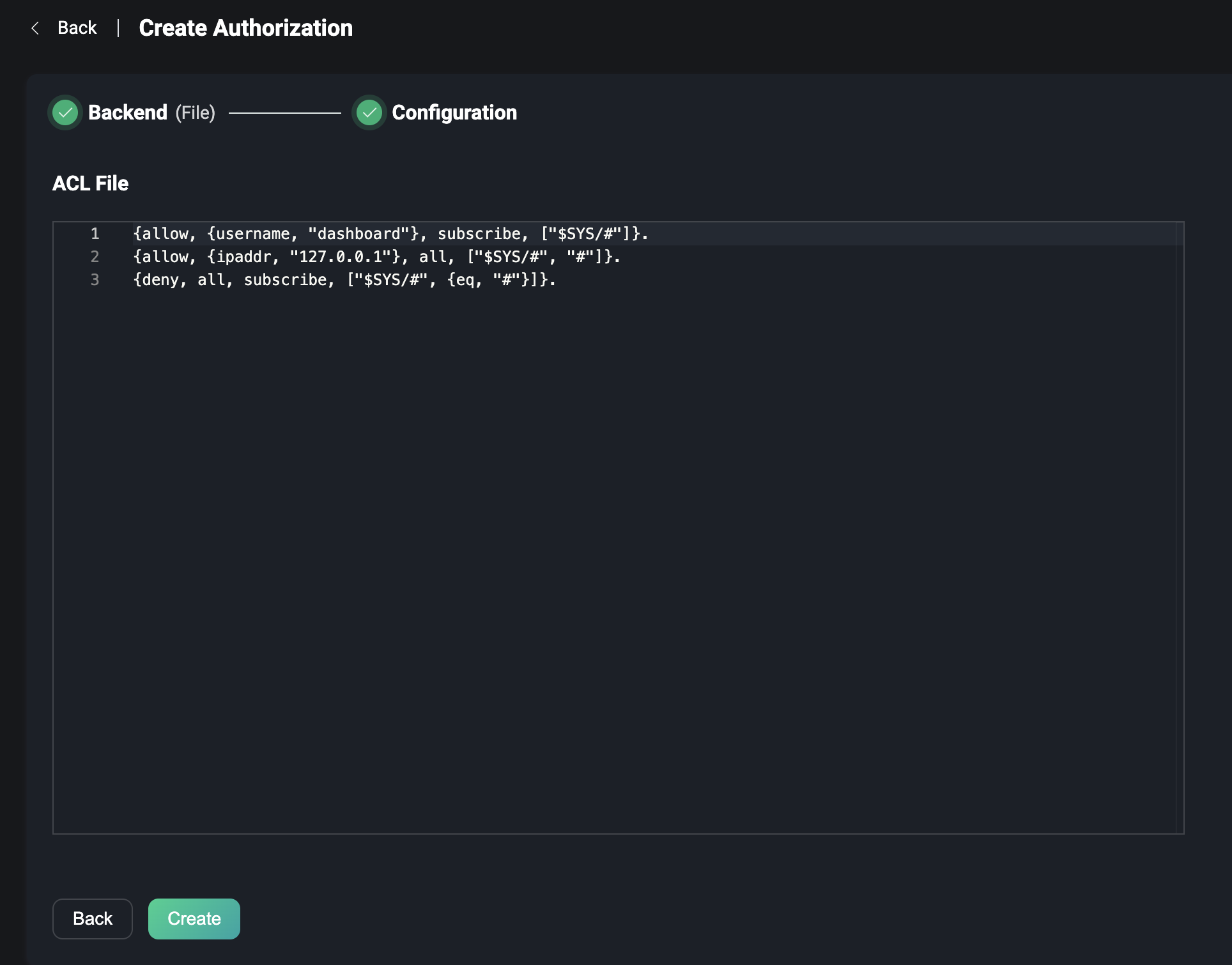
For more details about how to edit the contents of file rules, please visit File.
Built-in Database
For using the built-in database for authorization, there is no need to configure parameters, and just configure permission rules in the users' page after successful creation.
External Database
If you use an external database, you need to configure the address of the database you can access, the database name, the username, and the password, and fill in the SQL statements or other query statements on how to get the authorization data from the database. When publishing and subscribing, the authorization data will be queried from the database to determine whether the permission rules can be passed. Take MySQL as an example:
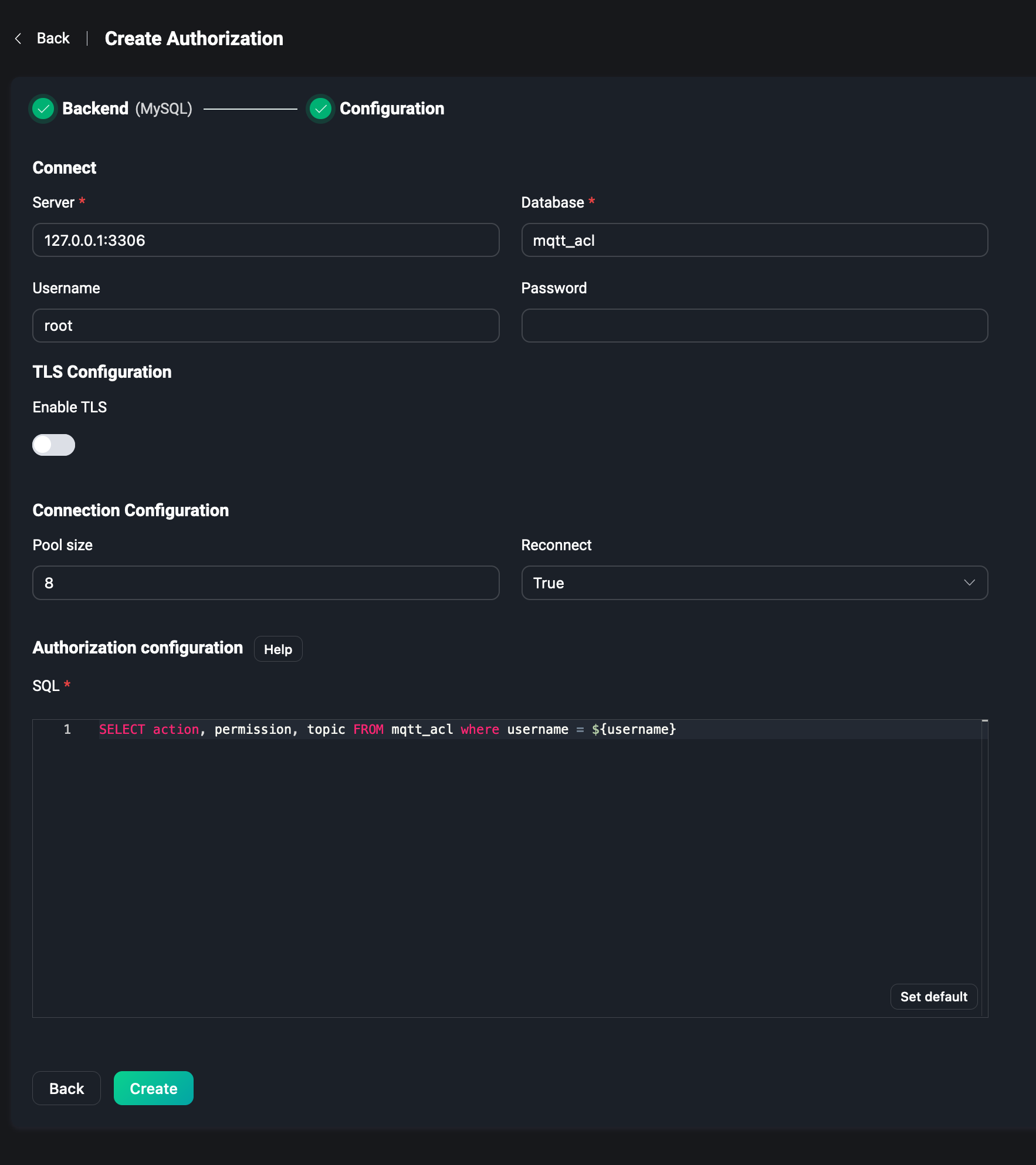
For more details on configuring MySQL or other external databases, please visit MySQL or see using other databases.
HTTP Server
To use the HTTP Server, we need to first have an HTTP server that is preconfigured to support authorization data matching. When subscribing and publishing, EMQX forwards the data to the HTTP service and determines, by the results returned by HTTP, whether the operation can pass the permission rules.
So we need to configure the address and method of requesting the service including the POST or GET method, request the Headers of the service, and configure the authorization information needed for publishing the subscription into the Body field, e.g. username, topic and action into the JSON data.
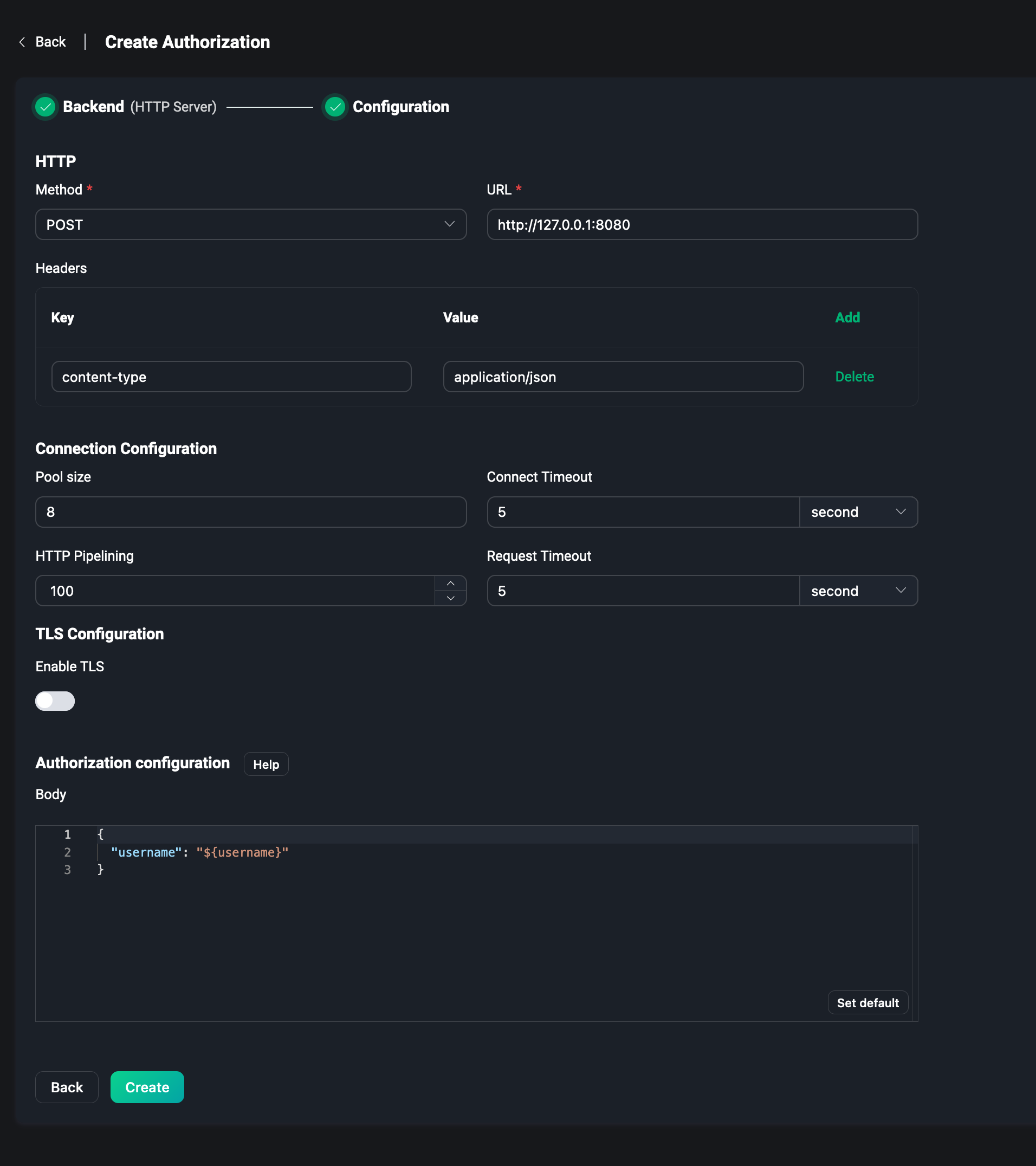
For more details about how to configure HTTP Server authorization, please visit HTTP.
After completing the configuration, click Create to quickly complete the authorization configuration. Note: You cannot select the used authorization backend again.
List
When the authorization is created, we can view and manage it in the authorization list. For example, if the external database is not deployed successfully and connected, you can see that the backend status is currently disconnected. If you hover over the field, you can see more status of all nodes in the EMQX cluster connected to that backend. Click the Enabled switch to quickly enable and disable this authorization.
The authorization list is similar to the authentication list in that each column can be reordered by dragging with the mouse, or the list can be reordered via the action column, as EMQX allows multiple authorization mechanisms to be created, Configured authorizers form a global chain. When a client makes a publish/subscribe request, authorizers are sequentially used to find access lists for the client. If an authorizer finds authorization rules, the request is checked against them and gets allowed/denied. If authorization rules are not found, then the next authorizer from the chain is used.
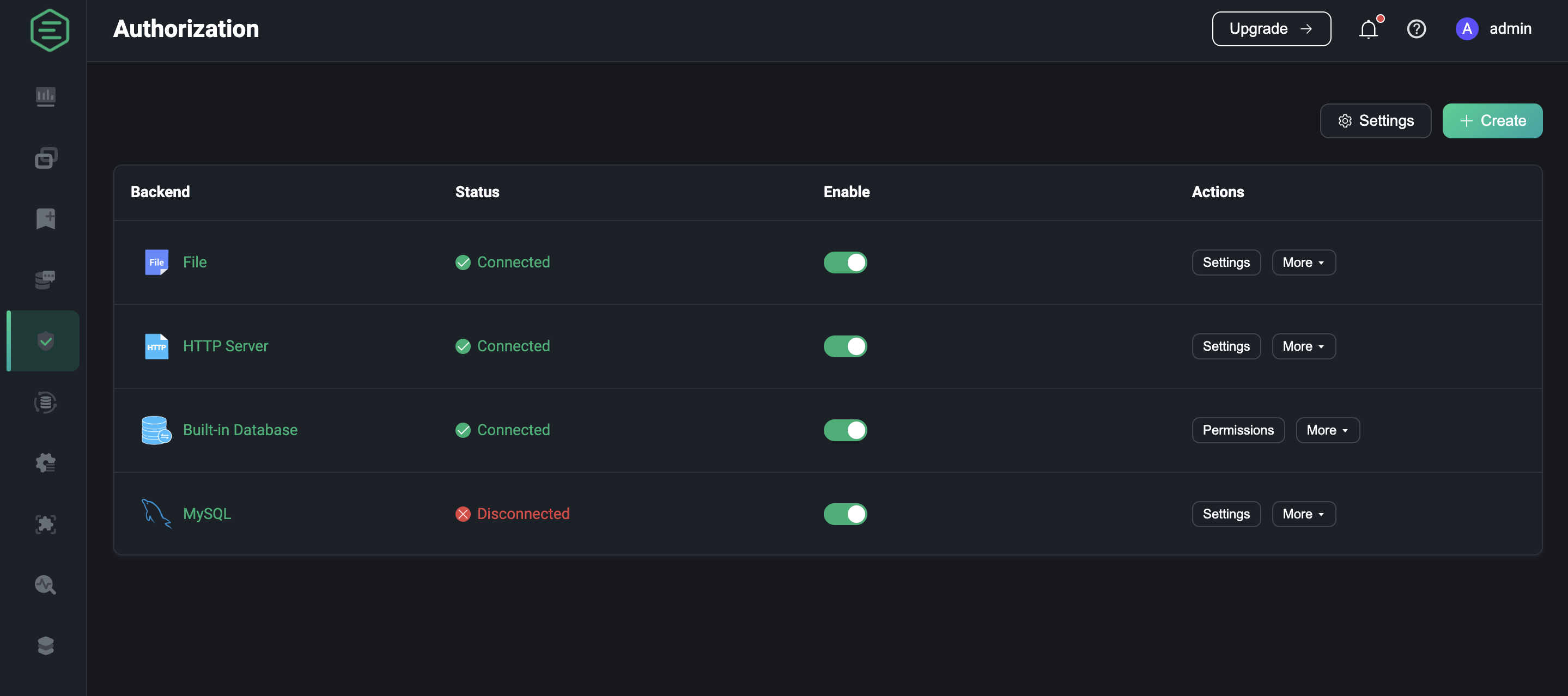
In the actions bar, you can also click on settings or delete the authorization, etc.
TIP
Disabled the authorization will affect the operation of permissions when the client publishes/subscribes. Please be careful.
Permissions
For users using the built-in database, click Permissions on the authorization list page to get to the users' page, where you can manage and configure authorization rules. You can distinguish clients by Client ID or Username, or add authorization rules for all users.
To use it, enter a topic for which you need to configure authorization rules, and choose whether to configure its permissions to allow or deny when subscribing to this topic or when publishing payload to this topic.
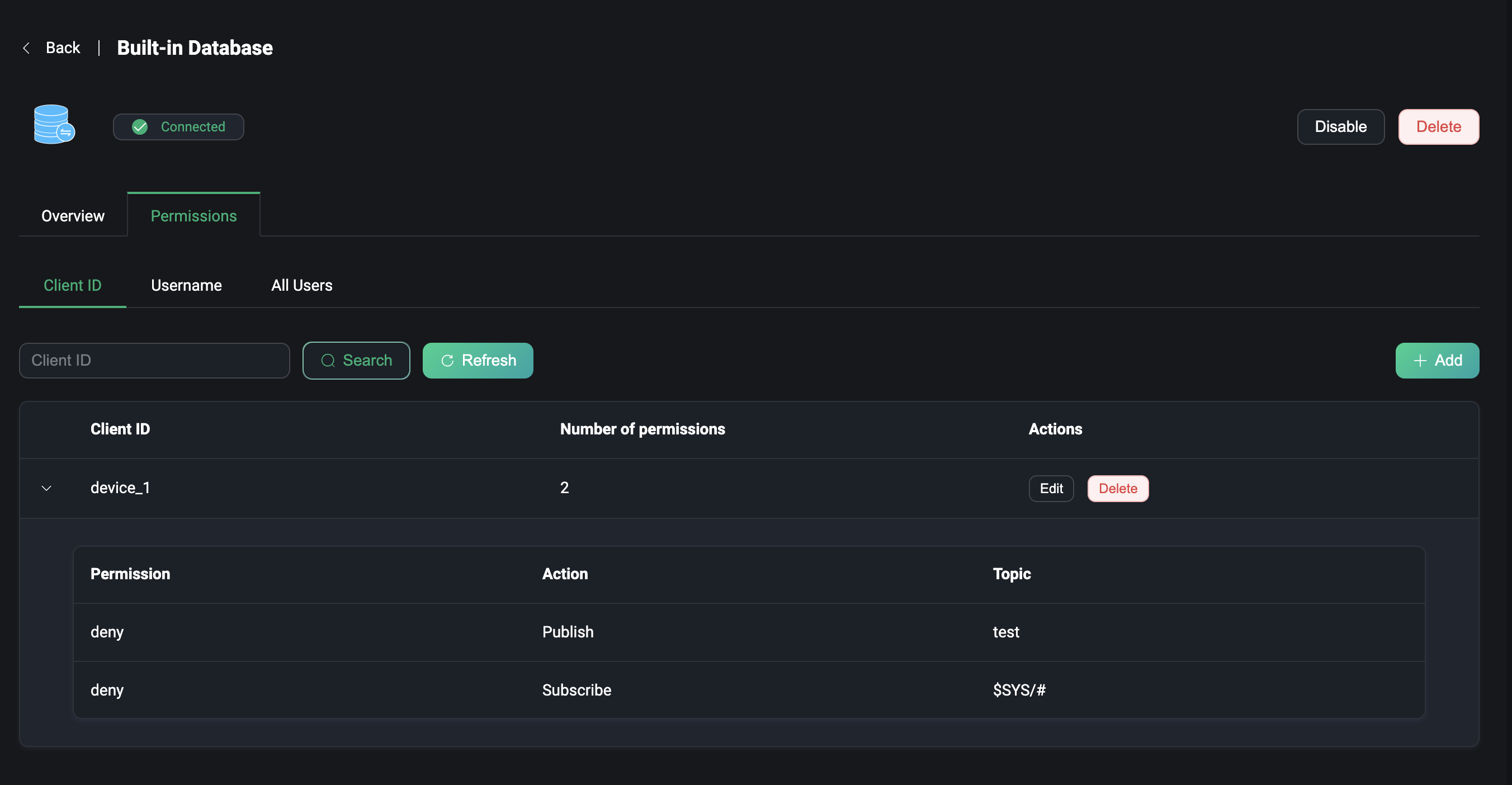
For more details about how to configure the authorization of the built-in database, please visit Built-in Database.
Overview
Clicking on the backend of the list page takes you to the overview page for that authorization. This page provides some metrics data related to authorization in the EMQX cluster, such as the number of successes and failures of authorization at runtime, the number of mismatches and the current rate, etc.
The node status at the bottom of the page allows you to view the authorization metrics data under each node from the list.
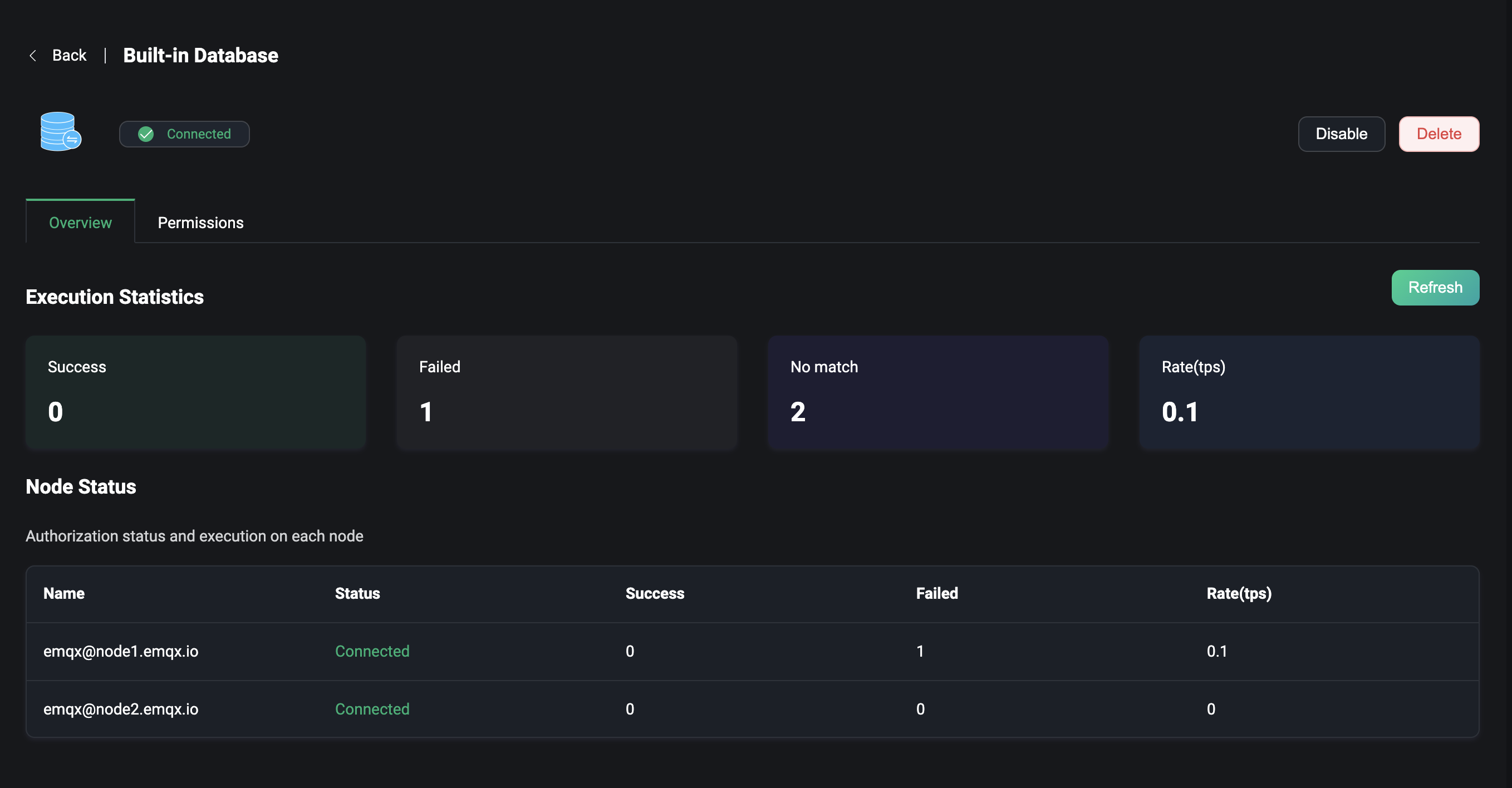
Settings
When you need to modify the backend of authorization, you can click Settings on the list page, and you can modify the configuration on the settings page, such as when you need to modify the content of the permission rules of the ACL file, or when some connection information of the external database occurs or the query statement is changed.
Global Settings
Click the Settings button in the upper right corner of the list page to configure the authorization globally.
Set the action when the authorization does not match, allow or deny, and whether to ignore the message or disconnect. Whether enabling the cache of authorization data, when it is enabled, it can reduce the access pressure on the authorization data backend. Click Clear Cache on the right side to quickly clear all current authorization result caches.
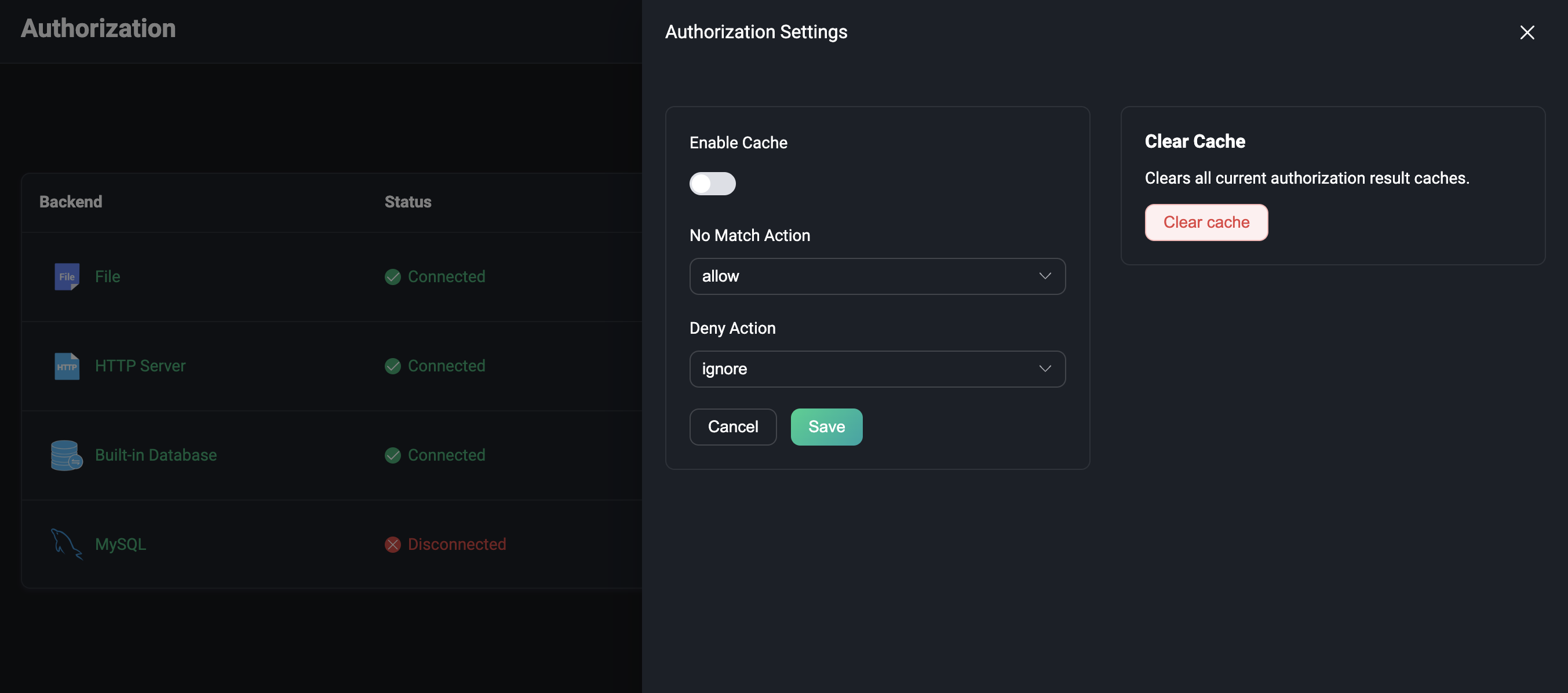
For more details about Authorization, please visit Authorization Introduction.